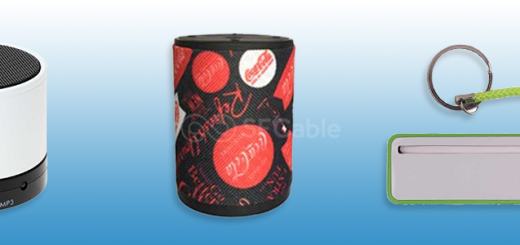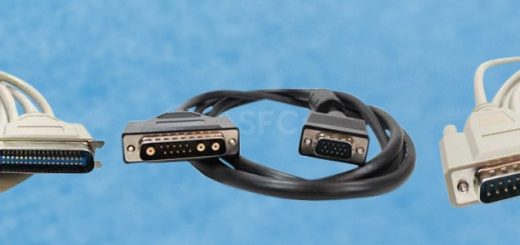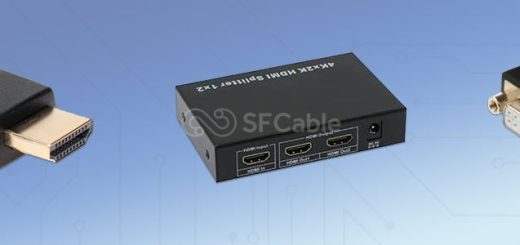Coaxial vs Ethernet cable – What’s the Difference?
In the world of technology, networking cables are really needed for sharing data between devices and for making connections. Coaxial and Ethernet cables are found to be quite prevalent; certain specific features characterize each of them.
While Ethernet cables are preferred in wired networking, coaxial cables are cables generally used for connecting the internet and television broadcasts. As such, structure, function, performance, and applications are the fields where they do not intersect.
It is quite easy to choose the right cable for your purpose if you know these variances. In our blog, we are going to have a comparison of coaxial and Ethernet cables based on these factors. This assumption focuses on finding the right cable that completely fulfills the functionality requirements in the end.
What is a Coaxial Cable?
A coaxial cable is an electrical cable that can carry high-frequency data signals with almost no losses. It consists of a jacket of insulation, an outer layer of the shield, an insulating layer, and then the central conductor is formed.
In the past, after transitioning from military radar and television broadcasting to cable TV and broadband internet, they became a lot more critical in the 1950s.
Except for the fact that fiber optics is slowly replacing them in some places, coaxial cables still work very well for fast data transmission.
Structure and Components of Coaxial Cable
Ethernet cables have key parts that make sure data moves. They contain copper wires twisted into pairs.
These twisted pairs boost signal quality by cutting down on electromagnetic interference and crosstalk. Each wire has plastic insulation to protect it from harm and stop short circuits.
An outer cover shields the cable from outside factors and physical damage. Some cables also have extra shielding to provide more protection in places with high interference.
Types of Coaxial Cables
-
RG-6 – You’ll find this in homes for TV, satellite, and fast internet.
-
RG-11 – This thicker wire gives better signals for TV and internet over long distances. RG-59 – Works well for old-school video and security cameras.
-
RG-8 – This thick coax handles high frequencies often in radio broadcast gear.
-
RG-213 – It’s a lot like RG-8 but has better protection and less signal loss.
-
Single-Shielded Coaxial Cable – One layer of shielding does the job in areas with little interference.
-
Double-Shielded Coaxial Cable – Two layers keep the signal strong.
How Coaxial Cables Work
A center conductor wrapped in a metal shielding layer and an insulating layer makes up these cables, which carry electromagnetic signals. This shielded wiring blocks outside interference and stops signal loss, ensuring smooth transmission.
Coaxial cables keep radiation-induced losses and reflections low, so they work best for high-frequency data. These features make them ideal for high-speed internet, cable TV, and broadband.
Common Applications of Coaxial Cables
TV Signal Delivery – Coaxial cables help send cable TV and satellite TV signals to homes and businesses.
Internet and Computer Networks – These cables often bring broadband internet and cable internet data from providers to modems.
Safety and Security Systems – Many surveillance setups use coaxial cables to link cameras with recording and monitoring equipment.
Wireless and Phone Services – Radio stations use these cables to connect with listeners. They also play a role in two-way communication and antenna connections.
What is an Ethernet Cable?
An Ethernet cable connects devices to a network through wired communication. It transmits data using electrical signals to provide quick and dependable internet connections. Ethernet cables are crucial in today’s networking.
They reduce lag and guarantee consistent data transmission in offices and data centers. These cables allow computers, switches, and routers in a local area network (LAN) to share resources and communicate.
Wireless networks are valuable for security, quickness, and minimal interference compared to wireless alternatives.
Structure and Components of Ethernet Cable
The essential parts of an Ethernet cable ensure data transfer. It has several copper wires twisted into pairs. By reducing electromagnetic interference and crosstalk, these twisted pairs improve the signal.
Plastic insulation is placed over each wire to prevent damage and short circuits. An outer casing protects the cable from external elements and physical damage. Shielding is an optional feature of some cables that adds an extra layer of security in high-interference environments.
Types of Ethernet Cables
-
Cat5 – Up to 100 Mbps, obsolete.
-
Cat5e (Enhanced) – Up to 1 Gbps, less interference.
-
Cat6 – Up to 10 Gbps at shorter distances (up to 55m).
-
Cat6a (Augmented) – 10 Gbps up to 100m, better shielding.
-
Cat7 – Up to 10 Gbps, better shielding and durability.
-
Cat7a – Enhanced Cat7, up to 40 Gbps at shorter distances.
-
Cat8 – Up to 25-40 Gbps, best for high speed data centers.
-
UTP (Unshielded Twisted Pair) – No extra shielding, for home and office use.
-
STP (Shielded Twisted Pair) – Has shielding to reduce interference.
-
FTP (Foiled Twisted Pair) – Features a foil shield for extra protection.
How Ethernet Cables Work
When Ethernet connections implement twisted pair technology they create better signal quality through minimized interference. The twisted structured eliminates electromagnetic noise which ensures stable data transfer.
RJ45 connectors serve as the communication interface that joins Ethernet cables to network devices. Full-duplex communication maintains simultaneous two-way connection while half-duplex communication sends data through one route at a time.
The shielded twisted pair (STP) cable stands out as the optimal selection when operating in noisy conditions because its enhanced shielding layer guards against outside interference. Even though unshielded twisted pair (UTP) cables are widely used and more affordable they provide limited protection against electrical interference.
Common Applications of Ethernet Cables
-
Internet and Network Connectivity – Ethernet cables’ core purpose is their ability to conduct internet and network connectivity services through wired links between routers, computers, and modems.
-
Office and Home Networking – Home and office Ethernet connections link computers, printers, smart televisions, and network-attached storage devices (NAS) systems.
-
Data Centers and Server Rooms – Data centers alongside server rooms use Ethernet cables to supply fast and dependable data transportation for servers and other network components.
-
IP Cameras and Security Systems – Security cameras and surveillance systems operate through Ethernet cables, which transfer data and power delivery functions through Power over Ethernet (PoE).
-
Gaming and Streaming – Users who stream or game online opt for Ethernet cables since they deliver superior low-latency connectivity at high speeds when compared to Wi-Fi.
Key Differences Between Coaxial and Ethernet Cables
| Feature | Coaxial Cable | Ethernet Cable |
|---|---|---|
| Structure | Central conductor, shielding, insulation | Twisted pairs of wires |
| Types | RG-6, RG-59, RG-11, etc. | Cat5, Cat5e, Cat6, Cat6a, Cat7, Cat8 |
| Usage | TV, satellite, broadband internet | Networking (LAN, WAN, internet) |
| Transmission Speed | Lower than Ethernet | Up to 40 Gbps (Cat8) |
| Bandwidth | Lower | Higher for fast data transfer |
| Interference | Less susceptible due to shielding | More susceptible but improved with twisted pair design |
| Connector Type | BNC, F-type, N-type | RJ45 |
| Flexibility | Less flexible | More flexible and easier to manage |
| Signal Loss | Lower over long distances | Higher over long distances without repeaters |
| Distance | Up to 500m without repeater | Effective up to 100m |
| Installation Complexity | More complex | Easier and standardized |
| Common Use Cases | TV, CCTV, broadband | Office, home networking, gaming |
| Cost | Generally cheaper | Can be more expensive, especially for high-speed options |
Factors to Consider When Choosing the Right Cable Between Coaxial & Ethernet Cable
Speed & Bandwidth
Ethernet connections provide greater bandwidth and quicker speeds for modern-day networking needs. Low-latency high-end Ethernet cables, like the Cat6 and Cat7, can provide up to 10 Gbps speeds.
On the other hand, coaxial connections are primarily used for cable internet and generally offer speeds up to 1 Gbps. The MoCA adapter will make your coaxial internet faster, but if you want the highest speed possible you will still want to go with an ethernet connection.
Application & Use Case
Ethernet is commonly used in business, gaming, and home networking setups. It is the best choice for applications with frequent data transfer and low latency. Only the broadband internet and cable TV that ISPs use are coaxial wires. But thanks to MoCA adapters, they can also make home networking possible in places without Ethernet.
Signal Interference & Reliability
EMI-resistant — Of all cables, Ethernet cables are the most resistant to excess electromagnetic interference (EMI) (especially shielded Ethernet cables). As a result, they are less susceptible to electric noise and thus more convincing in that area. The twisted pairs’ improved shielding lets coaxial cables transmit signals for decades without interference.
This makes them a suitable option for applications, such as, television and broadband, that need reliable transmission.
Installation & Compatibility
Ethernet needs appropriate networking hardware, such as switches, routers, and well-defined cabling. The new standard is often used in networking settings, whether in a new office space or building.
Cable lines are best for older homes with existing cable TV infrastructure. While they can be networked with MoCA adapters, this adds to the complexity and expense of installation.
Cost & Availability
Ethernet cables are readily available and inexpensive for many networking uses. They come in a range of categories based on their speed and shielding requirements.
In a network configuration, additional gear , such as MoCA adapters, may be required to make coaxial cables work. Due to this increase in overall cost, Ethernet is a cheaper solution for most users.
Distance & Signal Loss
Ethernet cables perform within 100 meters of transmission distance, and after that distance, performance will begin to degrade. After this distanc,e you need either signal repeaters or boosters to maintain speed and reliability.
Coaxial cables are better for long cable runs and large properties since it can travel further without a significant loss in signal strength. As such, they are commonly used for broadband and television services, which rely on steady signal quality.
Conclusion
Fiber and coaxial cables, on the other hand, have very different applications, corresponding advantages, and disadvantages. Enterprise networking, gaming, and high-speed internet are best served with Ethernet. Coaxial cables are more effective for cable-based services and long-distance signal transmission.
Selecting the proper cable remains imperative for various reasons, including cost factors, compatibility, and network setup. Ethernet is undoubtedly a future-proof technology, with each generation getting faster and better aligned with the evolving technology.
Coaxial is still helpful in some situations, particularly in older residences and networks that rely on MoCA.



